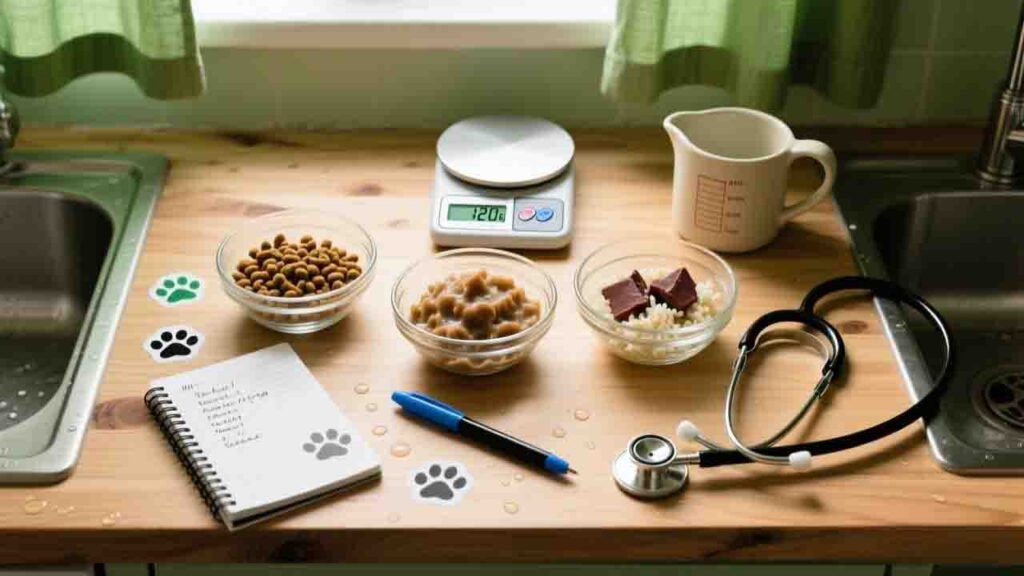That sound every pet owner dreads – the unmistakable gagging from another room that sends you sprinting for paper towels. Or the discovery of an unexpected mess on your freshly cleaned rug. Digestive issues are not just inconvenient; they’re signs from your pet’s body that something is out of balance.
Forget the guesswork and conflicting online advice. Let’s explore what’s actually happening inside your pet and how you can become an expert in understanding their digestive language.
The Journey of a Meal: A 101 in Pet Digestion
When your pet eats, food embarks on a complex journey:
-
Mouth & Stomach: Enzymes begin breaking down food. The stomach’s acidic environment acts as the first line of defense against pathogens.
-
Small Intestine: Here, nutrients are absorbed into the bloodstream with help from the pancreas and liver.
-
Large Intestine: Water is absorbed, and gut microbes (the microbiome) ferment fiber, producing essential nutrients.
-
The Microbiome: This ecosystem of bacteria is crucial. A diverse, balanced microbiome supports everything from nutrient absorption to immune function.
When any part of this system is disrupted, symptoms occur.
Decoding the Symptoms: What Your Pet’s Body is Telling You
Different issues point to different problems along the digestive tract:
Upper GI Issues (Stomach & Small Intestine):
-
Vomiting (especially soon after eating)
-
Regurgitation (passive expulsion of undigested food)
-
Yellow foam or bile (indicating an empty, irritated stomach)
Lower GI Issues (Colon & Large Intestine):
-
Soft stools or diarrhea
-
Mucus in stool
-
Straining to defecate
-
Increased frequency with small amounts
Common Causes of Digestive Distress
1. Dietary Indiscretion
The canine and feline version of “I shouldn’t have eaten that.” This includes:
-
Sudden changes in diet
-
Eating spoiled food from the trash
-
Consuming rich, fatty, or unfamiliar foods
2. Gut Microbiome Imbalance
When harmful bacteria outnumber beneficial ones, it can lead to:
-
Chronic soft stools
-
Gas and bloating
-
Poor nutrient absorption
3. Food Sensitivities
Unlike true allergies, these don’t always cause itching. Instead, they trigger:
-
Chronic intermittent diarrhea
-
Gas
-
Occasional vomiting
4. Underlying Health Conditions
Sometimes, digestive symptoms signal deeper issues like:
-
Pancreatic insufficiency
-
Inflammatory bowel disease
-
Thyroid disorders
-
Intestinal parasites
Creating a Digestive Care Plan
Step 1: The Elimination Trial
If you suspect a food sensitivity, work with your veterinarian to implement an elimination diet. This involves feeding a single novel protein and carbohydrate source for 8-12 weeks, then carefully monitoring symptoms.
Step 2: Support the Gut Environment
-
Prebiotics: These non-digestible fibers act as food for beneficial gut bacteria. They’re found in ingredients like chicory root, pumpkin, and certain other fibers.
-
Probiotics: These beneficial bacteria can help restore microbial balance, particularly after antibiotic use or digestive upset.
Step 3: Mindful Feeding Practices
-
Consistent feeding schedule helps regulate digestive rhythms
-
Proper portion control prevents overloading the system
-
Slow feeding encourages proper chewing and digestion
-
Avoiding table scraps maintains dietary consistency
When to Seek Professional Help
Contact your veterinarian if you notice:
-
Blood in vomit or stool
-
Symptoms lasting more than 48 hours
-
Lethargy or weakness accompanying digestive issues
-
Signs of pain or distress
-
Weight loss despite normal eating
The Science of a Healthy Gut
Understanding your pet’s digestive system transforms you from a confused observer to an informed caregiver. Each symptom is a clue, and each meal is an opportunity to support their wellbeing.
The goal isn’t perfection – it’s understanding. When you learn to interpret your pet’s digestive language, you’re not just cleaning up fewer messes; you’re building the foundation for their long-term health and vitality.
Your Action Step: Start a digestion diary. Note what your pet eats, any symptoms, and their energy levels. After just one week, you’ll have valuable insights to share with your veterinarian.



